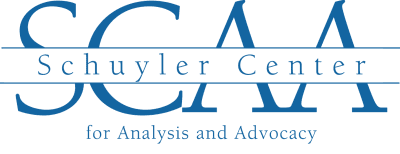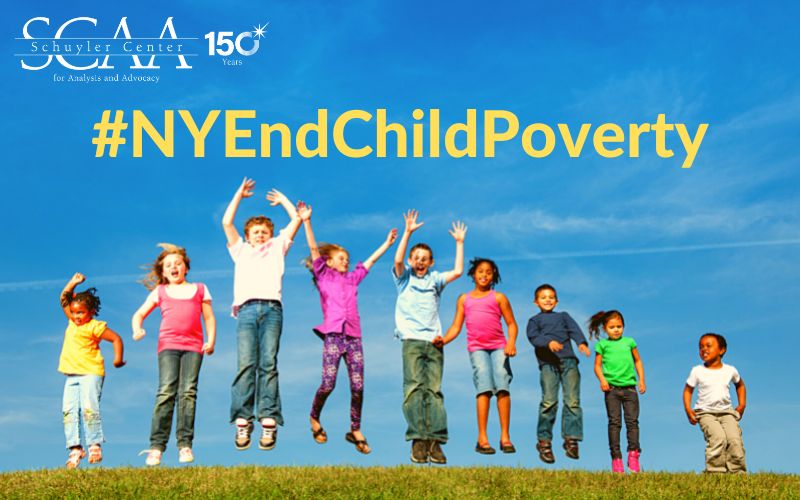In 2021, the New York State Legislature passed and the Governor signed the Child Poverty Reduction Act, committing the State to reduce child poverty by 50% over 11 years. The Act became effective on February 24, 2022. Among the expectations of the law is the seating of a Child Poverty Reduction Advisory Council, which held its first meeting in October 2022. The Council will meet again on January 12, 2023 – the livestream, materials, and recording will be posted here.
Codifying a goal of reducing child poverty by 50%, the Child Poverty Reduction Act directs the Child Poverty Reduction Advisory Council to:
- Submit to the Chairs of the Senate Finance and Assembly Ways and Means Committees, a report analyzing proposals contained within the Executive budget that are expected by the Advisory Council to impact the child poverty rate. This is expected no later than ten days after the Governor offers amendments to the Executive Budget.
- Develop and publish a timeline, inclusive of yearly benchmarks, for reducing child poverty in the state by fifty percent in ten years. The timeline shall be made publicly available.
- Deliver to the Governor, the Speaker of the Assembly and the Temporary president of the Senate, reports containing the timeline, the review of the policy proposals, the investigation of the effects of such policies, and the review of agency programs on or before eighteen months from the effective date of this section.
- Conduct formal public hearings, which shall take place in at least four regions of the state, as defined by the Empire State Development Corporation, and be offered during non-traditional hours to allow for persons unable to normally testify due to work requirements to so testify.
- Consider policy proposals that include, but are not limited to: expanding and strengthening the state’s Earned Income Tax Credit to align with the state’s minimum wage, cover individual taxpayer identification number (ITIN) filers and young, childless adults, and to be paid out quarterly; expanding and strengthening the state’s child tax credit to include young children and eliminate the minimum income threshold; expanding work training and employment programs; expanding access to subsidized housing; and expanding access to subsidized child care.
- Investigate the effects that each of the proposals listed above may have if enacted by itself, as well as the effect the proposals may have if enacted in conjunction with the other proposals including related changes to federal policies.
- Release a report outlining effects the enactment of such proposals may have on child poverty.
- Consider the disproportionate impact poverty may have on various racial and ethnic communities and what policies may assist in alleviating such disparities; ways to improve access to public benefits for individuals regardless of their immigration status; policies that assist families to obtain and maintain financial stability, including policies that assist individuals with educational advancement and securing employment that provides a living wage; any other factors that may impact a family, parent, or child’s ability to stay above the poverty level, including, but not limited to: (1) stability and predictability of income; (2) equitable and ready access to programs; (3) equitable treatment across racial, immigration, and ethnic groups; (4) positive environmental conditions; (5) the individual health and well-being of parents and children; and (6) the cost to the state, including the short-term costs of the programs and the long-term savings from having such programs in place.
- Deliver to the Governor, the Speaker of the Assembly and the Temporary President of the Senate the recommendations of the Advisory Council on or before two years after the effective date of this section.
- Release annual reports, starting September 2023, detailing the progress that the state has made in reducing the child poverty rate in line with the recommendations set forth in this subdivision.
- Collaborate with experts in the field of poverty research, utilize available data from other relevant statewide studies of poverty, and solicit input from stakeholder interests including, but not limited to persons impacted by poverty, non-profit organizations that assist those living in poverty, individuals or organizations that work to end racial disparities in New York, and child poverty advocacy organizations.
View a PDF of the directives outlined above.
UPDATED: View a recording of the Jan. 12 meeting and meeting materials.


Recent Comments